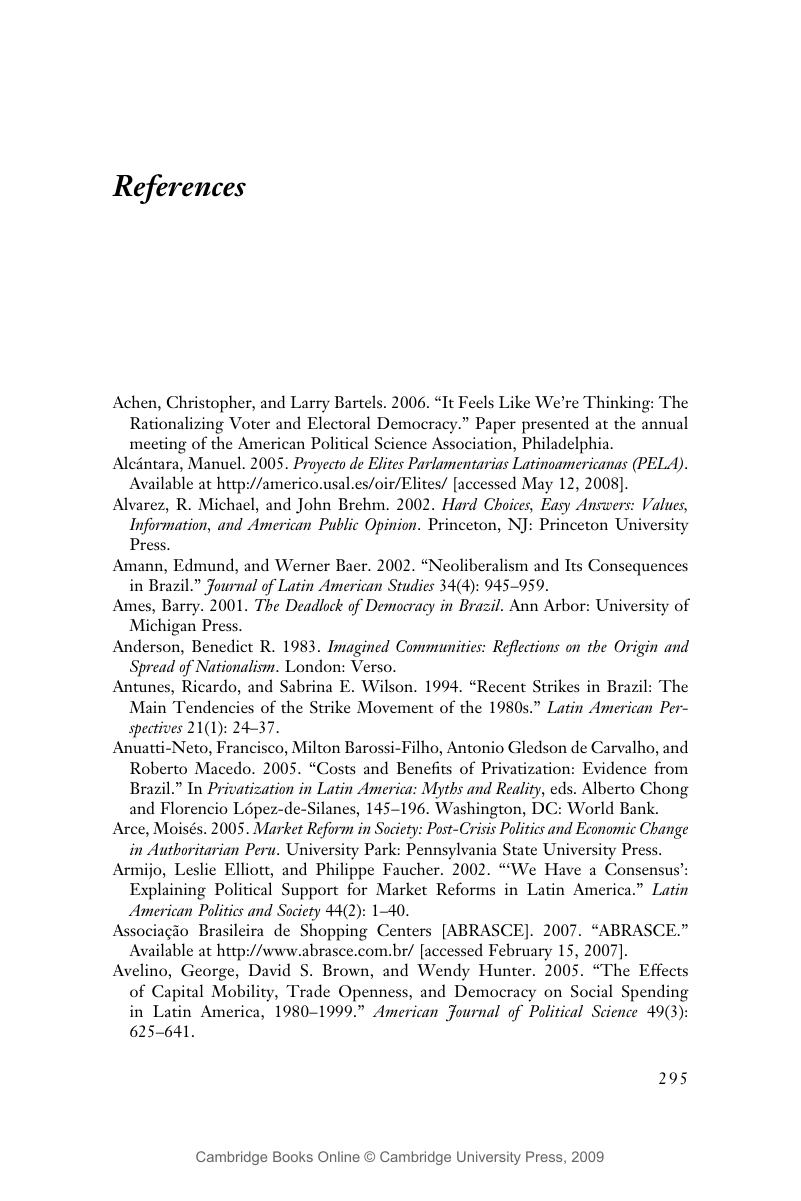Book contents
- Frontmatter
- Contents
- Figures and Tables
- Acknowledgments
- The Market and the Masses in Latin America
- Part I Introduction and Theory
- Part II Mass Beliefs about Market Policies in Latin America
- Part III Mass Support for Reform in Brazil
- Part IV Conclusion
- Survey Data Appendix
- References
- Index
- Titles in the series
- References
References
Published online by Cambridge University Press: 22 August 2009
- Frontmatter
- Contents
- Figures and Tables
- Acknowledgments
- The Market and the Masses in Latin America
- Part I Introduction and Theory
- Part II Mass Beliefs about Market Policies in Latin America
- Part III Mass Support for Reform in Brazil
- Part IV Conclusion
- Survey Data Appendix
- References
- Index
- Titles in the series
- References
Summary

- Type
- Chapter
- Information
- The Market and the Masses in Latin AmericaPolicy Reform and Consumption in Liberalizing Economies, pp. 295 - 316Publisher: Cambridge University PressPrint publication year: 2009



